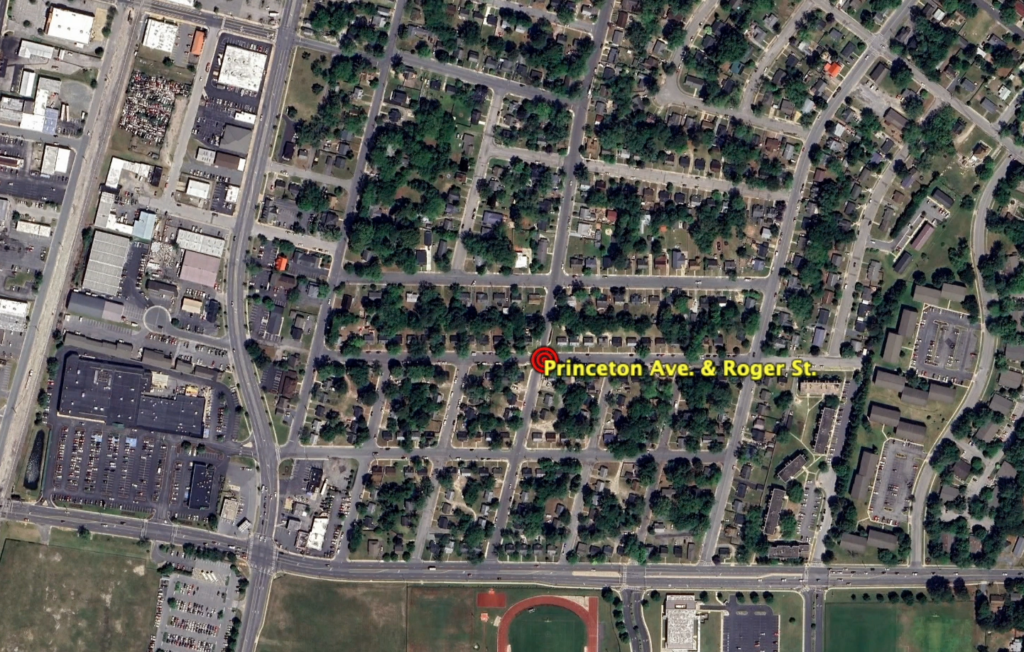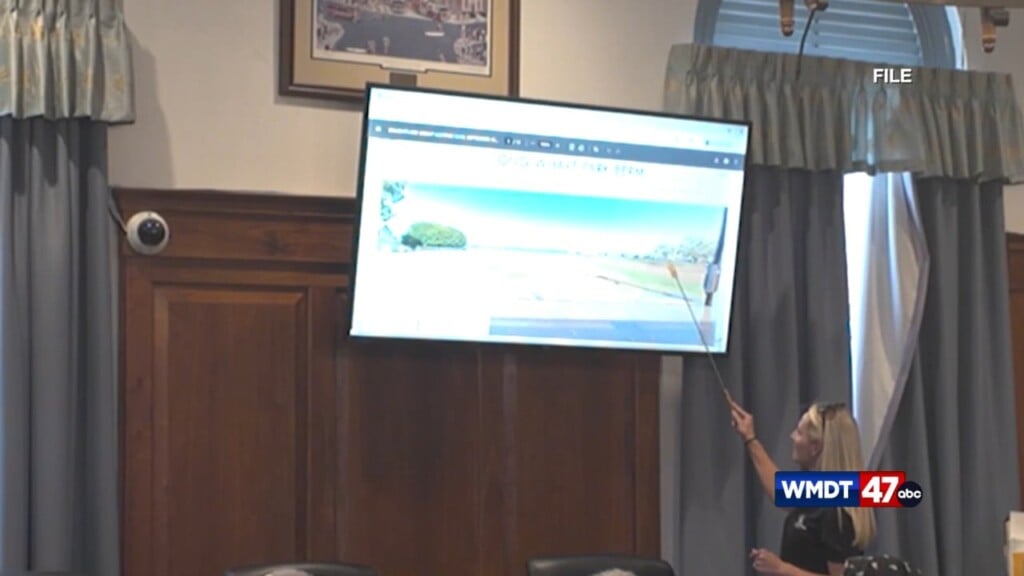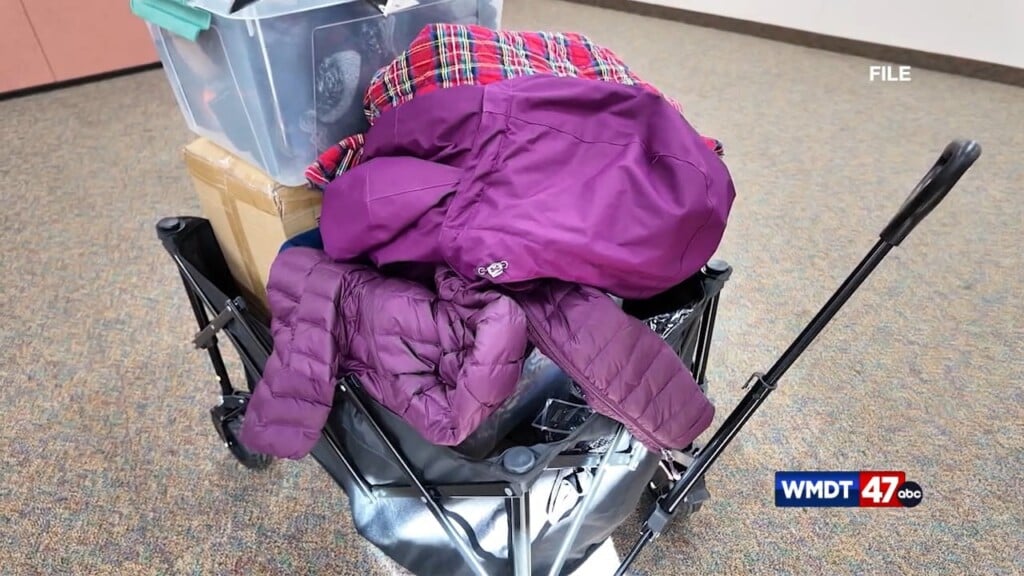MDE documents reveal more about Hebron DAF spill, Chesapeake Bay Fdn. calls for investigation
HEBRON, Md. – The Chesapeake Bay Foundation (CBF) is calling for a “rigorous investigation”, following a major DAF tank spill earlier this month.
Asking For More Answers From MDE
“There’s different accounts of the amount of spill into wetlands. The inspection report from Maryland Department of Environment says this amounts to an illicit discharge,” said CBF Executive Director, Alan Girard. “It impacts the wetlands, and it impacts the water of the state. That deserves to be fully investigated. The owner of the tank needs to be held accountable.”
Specifically, Girard says the CBF wants more answers on the Maryland Department of the Environment’s (MDE) handling of the spill. Girard says as material seeped into surrounding wetlands, concerns only grew.
“Folks are concerned about their drinking water being affected by this spill. So, we have a very localized issue that’s very serious to residents in Hebron and surrounding areas, and all of those living around this tank,” said Girard.
Digging Deeper Into DAF
Girard says he also wants MDE and the Maryland Department of Agriculture (MDA) to work together, and dig deeper into the overall issue of producing, and storing DAF material.
The 3 million gallon tank in question on Porter Mill Road contains the liquified waste product of poultry processing and pet food production. It is owned by Denali. The DAF material is trucked in from the company’s plant in another part of the state, says Girard.
“This plant has had violations of its own state permit in the past. It’s believed that the material that’s leaving this industrial facility is arriving in this tank, effectively, unaccounted for,” said Girard. “The state permit that governs industrial facilities, like the rendering plant in Linkwood, requires that certain standards be met for discharge to surface water.”
Whether those standards are being met or not, is up for debate, says Girard.
“Whether it’s transported, stored, or after it leaves the tank it’s applied on farm fields, all of that is expected to be accounted for by the state. Yet, it’s difficult, if not impossible, to get access to those records,” said Girard. “Citizens in Wicomico County and the state of Maryland are left with burdens like these, where the material leaves an industrial facility, it arrives at a tank, there’s a major spill, and no one knows the source, its contents, whether it was tracked appropriately, and what its fate is going to be.”
Girard calls it a “cradle to grave” issue. “The results are that we end up with a tank like this that has this kind of failure, and such a clear lack of accountability and understanding of what’s the next step,” he said.
How The Spill Happened
According to documents obtained by 47 ABC WMDT from MDE’s Water and Science Administration Compliance Program, this is how the spill played out:
March 6th, 2023
On March 6th, MDE was notified that “an accidental DAF material (i.e., poultry sludge)” spill occurred, and had affected non-tidal wetlands. An inspector arrived at the facility, where contractors were already conducting the cleanup. The inspector was shown “an impromptu containment area constructed atop bare farm soil,” surrounded by a berm of made of lime, compost, and mulch.
The inspector was told that the contractor’s trucks were out of storage capacity, and that the cleanup could not proceed until DAF material could be off loaded. “They proposed dumping the DAF material into this containment area where it would be mixed with the mulch to soak it up and then ‘stack’ it in the adjacent farm field.”
Given that DAF material is an approved soil amendment, and DAF spreading season started just five days before, MDA officials approved, and crews “immediately went to work emptying their vacuum trucks into this containment area.”
Later, the inspector was shown the broken pipe which led to the spill. “It was speculated that vibrations from the pump may have contributed to the pipe’s failure.” The inspector was also shown pieces of pipe that had broken off, and was told that a Denali employee had initially discovered the spill around 7 a.m.
The inspector then continued checking out the area, and found that 30,000 square feet of the woodlands were covered by about 4 inches of DAF material. At that time, it was estimated that about 74,000 gallons had spilled.
Two violations were identified: Title 9 of the Maryland Environmental Article, citing unauthorized impacts to waters of the state, specifically filling of non-tidal wetlands with DAF, and Title 5 of the Maryland Environmental Article, citing unauthorized impacts to nontidal wetlands and/or the associated 25’ buffer zone, and the filling of jurisdictional nontidal wetlands and/or the associated 25’ buffer zone with DAF material.
March 7th, 2023
On March 7th, MDE personnel carried out a follow-up inspection. Contractors were still on site, cleaning up the DAF material. “It [was] also observed that the facility [had] resumed normal operations, filling tanker trucks with DAF material from the storage tanks utilizing the one remaining operational pump on the opposite side from the one that failed.”
A Denali employee told the inspector that cleanup was expected to be complete within the next few days. He also expressed to the inspector that cleanup had progressed 30 yards outward from the spill origin. The inspector observed crews using heavy machinery to clear the area, and covering the ground with mats to allow vehicles to reach further into the woods.
March 8th, 2023
On March 8th, MDE was called back to the site to meet with the property owner’s environmental consultant. The inspector arrived around 2:00 p.m., and observed that cleanup had progressed deep into the wetlands. The wetter conditions limited the abilities of heavy machinery.
Contractors were observed squeegeeing DAF material to a vacuum hose. However, the DAF material had been mixed in with leaves and sticks, causing frequent blockages of the hose.
Crews discussed spreading lime onto the area with the MDE inspector. Given the possible adverse environmental impacts of doing so, the inspector asked for his superior’s feedback. “Within minutes this inspector received feedback from his office that the spread of lime for this situation is optional. It was also expressed that any effort to scrape the affected topsoil should be limited to <4” to prevent removal of the seed bank and leave hydric soil at the surface.”
It was then agreed upon that the DAF material was “removed to the best of [the contractors’] ability with the squeegees, [and] the affected area should be covered in straw mulch by hand.” It was also promised that deep ruts made by heavy machinery would be filled in and smoothed over.
One violation was identified: Title 5 of the Maryland Environmental Article, citing unauthorized impacts to nontidal wetlands and/or the associated 25’ buffer zone, and the filling of jurisdictional nontidal wetlands and/or the associated 25’ buffer zone with DAF material.
March 9th, 2023
On March 9th, MDE inspectors again visited the site to further discuss wetland restoration guidance. When the inspector arrived, it was observed that cleanup was “nearly complete and [was] on track to finish by the end of the day.”
Contractors said they would work throughout the night to hand-spread straw mulch, ahead of forecasted rain and freezing conditions. The inspector reminded crews that removing the DAF material before rainfall was “crucial, [and] the covering of straw mulch can wait until better conditions [were] available.”
Eventually, crews and the inspector settled on the straw mulch, fortified with seed mix to allow revegetation. The inspector also revised the spill estimate to about 36,000 gallons.
One violation was identified: Title 5 of the Maryland Environmental Article, citing unauthorized impacts to nontidal wetlands and/or the associated 25’ buffer zone, and the filling of jurisdictional nontidal wetlands and/or the associated 25’ buffer zone with DAF material.
Looking Ahead
MDE tells 47 ABC WDMT that they visited the site once more on Tuesday, March 14th. Then, it was determined that the DAF material “was removed to [their] satisfaction.
The discovery and reporting of the spill, and whether the tank owner will be subject to penalties, is still under investigation.


